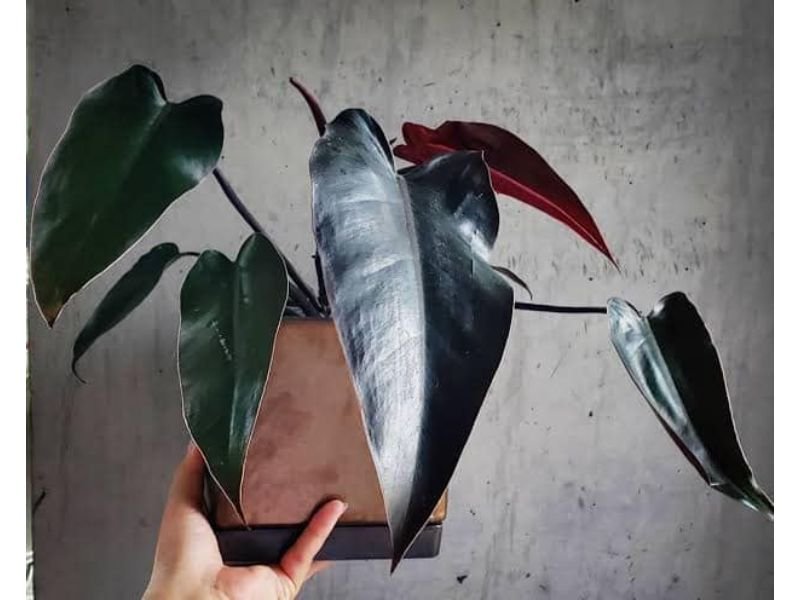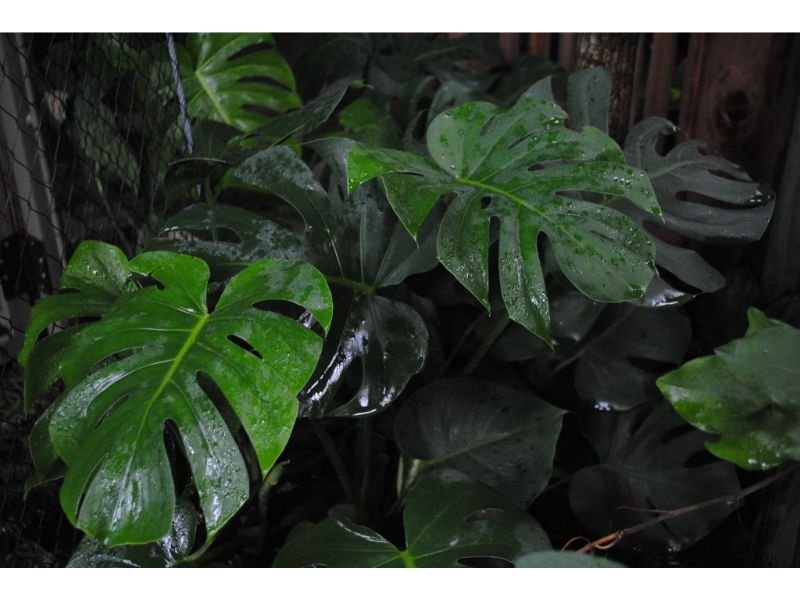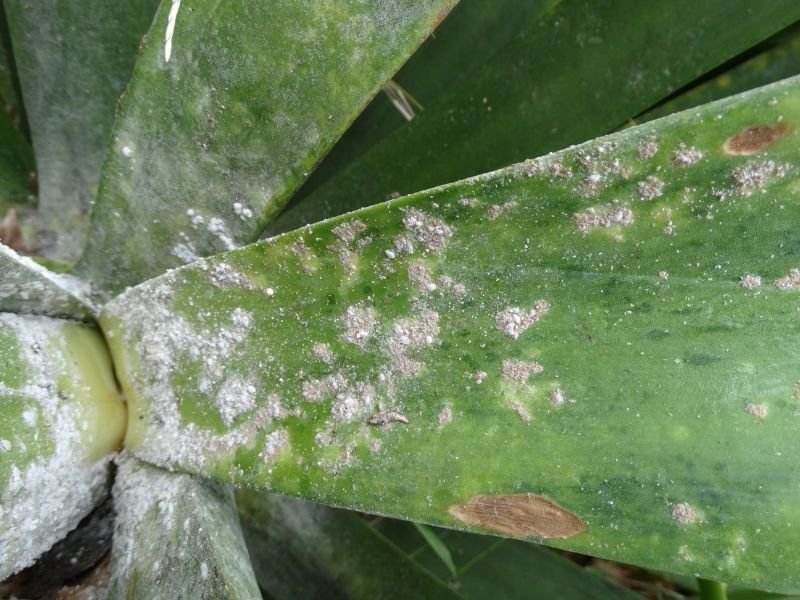Last updated on June 12th, 2023 at 08:07 am
Same to any other living being, tropical plants need some basic things like sunlight, water, and food to survive. But how much sunlight for tropical plants is too much? How often should you water and give fertilizer to tropical plants? In this article, we are going to discuss how to grow tropical plants. So let’s get started.
Table of Contents
Origin & Usage
Tropical plants, as the name states, originated from tropical areas in the world. Usually, these areas fall in the 9 to 11 (or higher) hardiness zone. It would be challenging to grow tropical plants if you’re living in an area where the hardiness zone is 8 or colder, however, with enough knowledge and precautions about how to care for tropical plants, you sure can grow one, or even more.

Most tropical plants are easy to grow, making them one of the best plants to grow for beginner gardeners. They can be grown both indoors and outdoors too, depending on which tropical plant species you’re choosing.
Main physical attributes
Tropical plants come in broad variations of colors, shapes, and sizes. They can grow as massively as 3 meters, like Monstera gigas, or as small as around 30 to 60 centimeters only, like several Philodendron species and Chinese Evergreen. Depending on which variegated species, their foliage shapes, and colors could be split-shaped, heart-shaped, or elephant’s ear-shaped with green, white, yellow, pink, or even darker colors like black and deep purple.

In their natural habitat, most tropical plants are known as epiphytic. These plants are using another plant (called a ‘host’ plant) as a growing place. For example, Philodendron that lives on a tree trunk. They are not the same as parasitic plants which are dangerous for their ‘host’ plant because an epiphytic plant does not take nutrients from its ‘host’ plant.
Condition Requirements to Grow
Here are the basic requirements on how to grow tropical plants.
Hardiness
Before growing tropical plants, the first thing to do is determine what your hardiness zone is. If you’re living in a 9 to 11 hardiness zone, or even warmer, then tropical plants are best for you. It doesn’t mean that you can’t grow tropical plants if you’re living in an 8 or colder hardiness zone. Just make sure to get as much as possible knowledge about how to care for tropical plants and you should be okay.
Pro tips: Move your tropical plants indoors when the temperature drops, rains, or snows. You can use grow light for plants too if your temperature is too cold but beware of your energy consumption. Another tip is to just simply move your tropical plants too much warmer areas.
Sunlight
Rainforests, where tropical plants originate from, are full of high trees with large canopies. Thus making tropical plants need bright sunlight for a minimum of 6 hours a day, but not directly. Keeping your tropical plants in direct sunlight can cause their leaves to burn, so it’s important to keep this in mind.

Some tropical plants even can thrive well under low light circumstances. But you should check out which tropical plants you are planting since each of them needs different sunlight requirements. But the general rule of thumb is, tropical plants need bright but indirect sunlight.
Soil
When it comes to how to care for tropical plants, one of the best things about these plants is that they are not picky about potting soil. Generally, tropical plants do well under any soil mix, but it’s best to provide them with a high organic matter potting mix to boost growth. Also, take note that they love soil with a good drainage system.
Pro tips: Add an extra layer of perlite, orchid bark, or sand to your soil mix to allow more drainage.
Moisture and Humidity
Other basic requirements that you should provide in order to grow tropical plants are moisture and humidity. Make sure to always keep the soil moist and plant them in areas where the humidity level is above 60%.
Pro tips: To maintain the moisture and humidity level, you can use a humidifier for plants, spray mist, or just simply move the plant to an area where humidity is high. Bathrooms are a good example of this. To restrain moisture in the soil, you can add vermiculite, peat moss, or coconut coir to your potting mix.
Care Guide
Here is the complete care guide about how to grow tropical plants. If you do these steps, you don’t have to worry about getting your tropical plants sick!
Planting
The best time to plant tropical plants is no later than August. Do not plant them around winter. In most cases, tropical plants can go dormant during this cold season.
Water
Maintaining proper watering is one of the crucial parts of how to grow tropical plants. Keep the plant’s soil moist but do not let the water sit too long on their foliage, and do not let the soil too wet. Watering about once to twice per week is ideal for most tropical plants.
Pro tips: To check whether it’s time to water or not, check the first 5 centimeters of the topsoil by dipping your index finger. If it feels dry, then it’s time for watering. You can make a watering schedule to be more precise.
Fertilizer
Every plant loves high-nutrient soil. To provide more nutrients, one of the best ways is to use fertilizer. Both chemical and non-chemical fertilizers are okay for tropical plants, but try to use less chemical fertilizer as it tends to be not so good for both your tropical plants and the soil itself in the long run.
Pro tips: Fertilize only during the growing season, usually in the summer and spring. Do not put too much fertilizer and do not fertilize during winter since during this season, there will be minimum growth. Use a fertilizer that is formulated especially for tropical plants. If you go by nature, you can use compost, tea, grounded coffee, crushed eggshells, and any other natural ingredients as fertilizers.
Pruning
Pruning is beneficial to promote new plant growth, and tropical plants are no exception. Prune any dead leaves, blooms, or stems. You can prune your tropical plants during the start of the growing season in spring and/or early summer.
Harvest
If you’re looking for some info about how to grow tropical plants, the harvesting season may also come to your mind. Keep in mind that tropical plants consist of broad species of plants, they may or may not be producing fruits and blooms–or they also might be just ornamental tropical plants. So the best way to know when is the time to harvest your tropical plants is by looking at which species you’re growing to meet your expectations.
Propagation and Repotting
Propagation is an important step in how to care for tropical plants, especially if you want to grow another plant for the next season. Generally speaking, most tropical plants can be propagated using two techniques, that is stem cutting and growing from seedlings. However, seed propagation can be harder to do than stem cutting, so we recommend going by stem cutting instead.
Most tropical plants are known for their rapid growth, so repotting should be done whenever the container, potting, or planting areas seem already too small for the plant, or whenever new growth occurs, usually during the growing season.
Pro tips: How to choose pots or containers material for tropical plants.
1. Make sure to pick one with good drainage holes
2. For plastic material: good to restrain moisture but can be broken from too much exposure to sunlight. It’s lightweight too.
3. For wood material: more durable, but not lightweight. Can be prone to fungi as well if it's soaked with too much water.
4. For terra cotta or clay: can be lightweight or not, depending on how thick and big the size is. Can be easily broken but provides air and good moisture.
Common Problems
When talking about how to grow tropical plants, something is missing if we don’t discuss common problems like pests, fungi, and diseases. Common pests and bugs like spider mites, mealybugs, and gnats are the most problem-causing in tropical plants. To deal with these pests and bugs, you can use neem oil, insecticide, mild liquid soap, horticultural oil, and insecticidal soaps. In a non-chemical way, you can try sticky traps.

Common fungi like powdery mildew, and common diseases like yellowing leaves, browning leaves, root rot, no new growth/stunting, leggy growth, leaf drop, and dull color/inverted color (for variegated species), can be cured in several ways.
The first thing to do is, analyze what causes the problem. For example, root rot because of too much watering. If this happens, you should decrease the water intake for your tropical plants. But in general, most of these diseases, fungi, as well as pests and bugs, can be prevented or minimized by doing all the tips above on how to grow tropical plants.
Conclusion
To conclude, growing tropical plants is an easy and fun task to do. As long as you get well informed about how to grow tropical plants, you sure can keep your plant healthy and happy!

New author in the hood. Loves gardening and flowers are my spirit animals (yes I know they are not animals but I insist). I will be covering most of the flowers’ topics here and occasionally random though as well.






